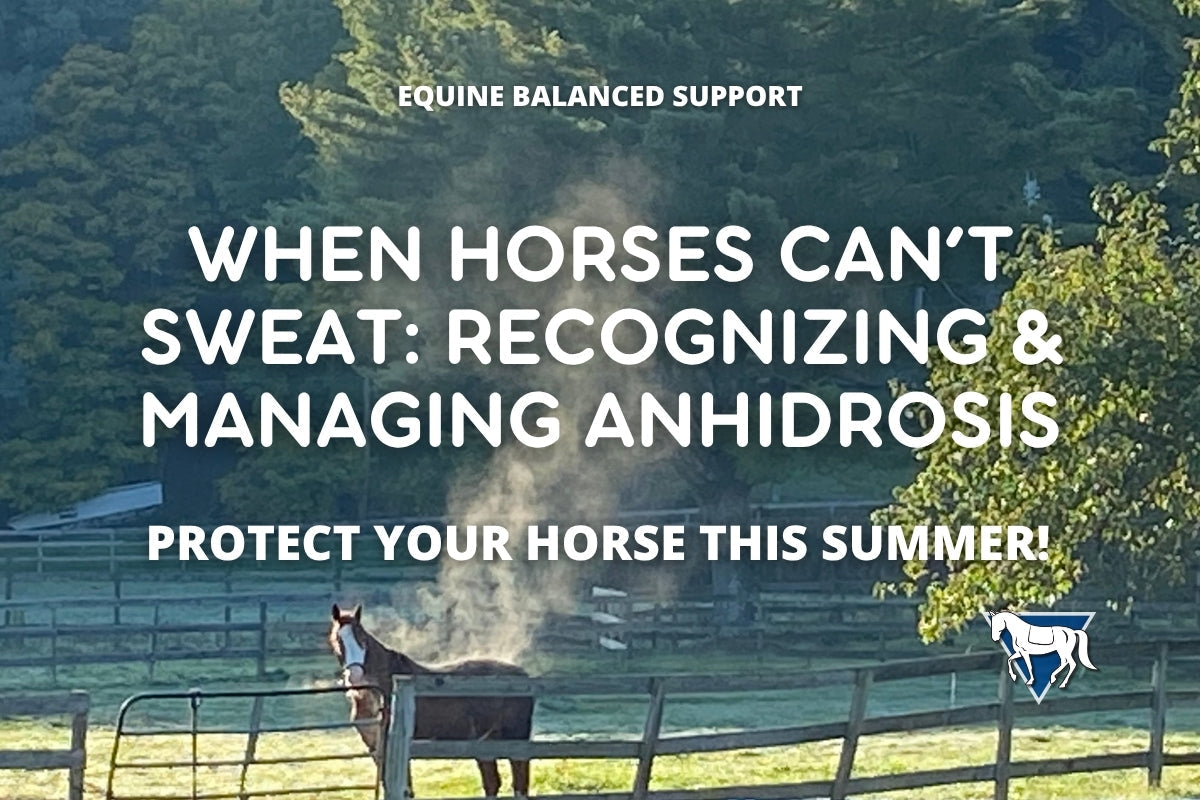Anhidrosis in Horses: Signs, Causes, and Management for Heat Stress

Anhidrosis in Horses: Signs, Causes, and Management
Anhidrosis, or the inability to sweat, is a serious and potentially life-threatening condition in horses, particularly in hot and humid climates. Sweating is the primary means by which horses regulate body temperature. When this mechanism fails, affected horses are at risk of overheating, which can lead to decreased performance, heat exhaustion, or even death.
The exact cause of anhidrosis is not fully understood. It is believed to involve dysfunction of the sweat glands, possibly related to chronic overstimulation by stress hormones such as epinephrine. Genetics, prolonged exposure to hot environments, and individual susceptibility may also play roles.
What are the Signs of Anhidrosis in Horses?
The clinical signs of anhidrosis can vary in severity, but they all stem from the horse's inability to cool itself adequately. One of the most notable signs is labored or rapid breathing, which becomes evident during or after exercise. This increased respiratory effort is a compensatory mechanism: when a horse cannot sweat, it relies more heavily on respiratory evaporation to dissipate heat. However, this method is far less efficient than sweating and can quickly lead to fatigue and overheating.
Another key sign is poor recovery after exercise. Typically, a horse will return to its resting temperature, heart rate, and respiratory rate within 20–30 minutes of moderate activity. In anhidrotic horses, these parameters often remain elevated for extended periods because the body is unable to release internal heat effectively. This prolonged elevation can be an early warning sign of developing heat stress.
As the condition progresses or if exercise continues, the horse may become dangerously overheated, leading to more serious consequences. Signs of heat exhaustion or heat stroke include weakness, lethargy, an uncoordinated gait, muscle tremors, and, in severe cases, collapse. Internal body temperature can rise above 105°F (40.5°C), which, if sustained, may lead to organ damage, particularly in the brain, liver, and kidneys. Prolonged hyperthermia can also disrupt normal electrolyte balance, leading to laminitis—a painful and potentially debilitating condition that affects the hooves.
Prompt recognition and intervention are critical to prevent these complications and preserve the horse's health.
How is Anhidrosis Diagnosed in Horses?
Diagnosis is typically based on history and clinical signs; however, a "sweat test" using intradermal injections of epinephrine can confirm the condition by demonstrating a poor or absent sweat response.
Management focuses on minimizing heat stress. Horses affected by heat stress should be exercised during cooler hours, provided with shade and fans, and closely monitored to ensure their well-being. Electrolyte supplementation and feeding dark beer or specific supplements, such as One AC, have anecdotal support, although scientific evidence is limited.
Does Vitamin E Help Horses with Anhidrosis?
A link between anhidrosis and vitamin E deficiency has been suggested, but the mechanism underlying this relationship is not yet fully understood. Vitamin E is a vital antioxidant that helps protect cell membranes from oxidative damage, particularly in muscle and nerve tissues. In horses, vitamin E is crucial for maintaining neuromuscular function and supporting immune health.
Some practitioners have observed that horses with chronic anhidrosis may also have low serum vitamin E levels, especially those on limited pasture or poor-quality hay diets, as fresh forage is the primary natural source of vitamin E. This has led to speculation that a deficiency could indirectly impair sweat gland function by contributing to oxidative stress or neurological impairment that affects the thermoregulatory system.
However, scientific evidence directly linking vitamin E deficiency to anhidrosis is limited. While supplementation with vitamin E is often recommended as part of a supportive care regimen—particularly if a deficiency is confirmed—it is not a guaranteed treatment for anhidrosis. Still, maintaining adequate vitamin E levels is crucial for overall health and may help support cellular resilience in horses facing heat stress or other systemic challenges.
In cases where anhidrosis is present and dietary analysis suggests marginal vitamin E intake, oral supplementation with natural-source vitamin E (d-alpha-tocopherol) is preferred for better bioavailability. Blood testing can confirm deficiency and guide dosing under veterinary supervision.
Is Acupuncture Helpful for Horses with Anhidrosis?
Acupuncture has gained attention as a complementary therapy for managing anhidrosis in horses, particularly in cases where conventional approaches have limited success. Though scientific data are still emerging, some veterinarians trained in Traditional Chinese Veterinary Medicine (TCVM) report positive outcomes using acupuncture to stimulate sweating and support thermoregulation.
Acupuncture involves the insertion of fine needles into specific points on the horse's body to influence energy flow (Qi) and stimulate physiological responses. In the context of anhidrosis, acupuncture may help by:
- Modulating the autonomic nervous system which governs involuntary functions like sweating.
- Improving circulation and cellular function in the skin and sweat glands.
- Reducing oxidative stress and inflammation, which may contribute to gland dysfunction.
Specific acupuncture points are explicitly targeted to achieve thermoregulatory balance, support respiratory health, and aid the spleen and lung meridians, which are believed in TCVM to influence fluid metabolism and sweating.
Clinical Use and Evidence
Anecdotal reports and small-scale studies suggest that some horses respond to acupuncture with a partial or even complete return of sweating, especially when treatment is initiated early. Responses can vary, and multiple sessions may be needed. Horses that do respond often require ongoing maintenance treatments, particularly during peak heat seasons.
While acupuncture should not replace environmental management (shade, fans, exercise modification), it can be a valuable adjunct—especially in cases that don't improve with dietary or pharmacological support alone.
Acupuncture for anhidrosis must be performed by a licensed veterinarian trained in equine acupuncture to ensure safety and effectiveness.
Although some horses recover spontaneously, especially after being moved to a cooler climate, others may experience permanent impairment. Early recognition and appropriate management are essential to prevent complications and maintain the horse's quality of life.
Conclusion
Anhidrosis is a complex and potentially life-threatening condition that challenges both horses and their caregivers, especially in hot, humid climates where thermoregulation is crucial. While the underlying causes are not yet fully understood, recognizing the signs early—such as labored breathing, poor recovery, and increased body temperature—is vital for preventing severe heat-related illness. Management strategies should prioritize environmental modifications, hydration, and nutritional support, including consideration of vitamin E levels. Additionally, complementary therapies such as acupuncture may offer promising benefits, particularly when conventional measures are insufficient.
Because responses to treatment can vary, a multifaceted, individualized approach guided by veterinary oversight offers the best chance of improving outcomes. With prompt intervention and ongoing care, many horses with anhidrosis can be maintained comfortably and safely, preserving their health, performance, and well-being.





Leave a comment